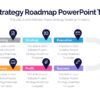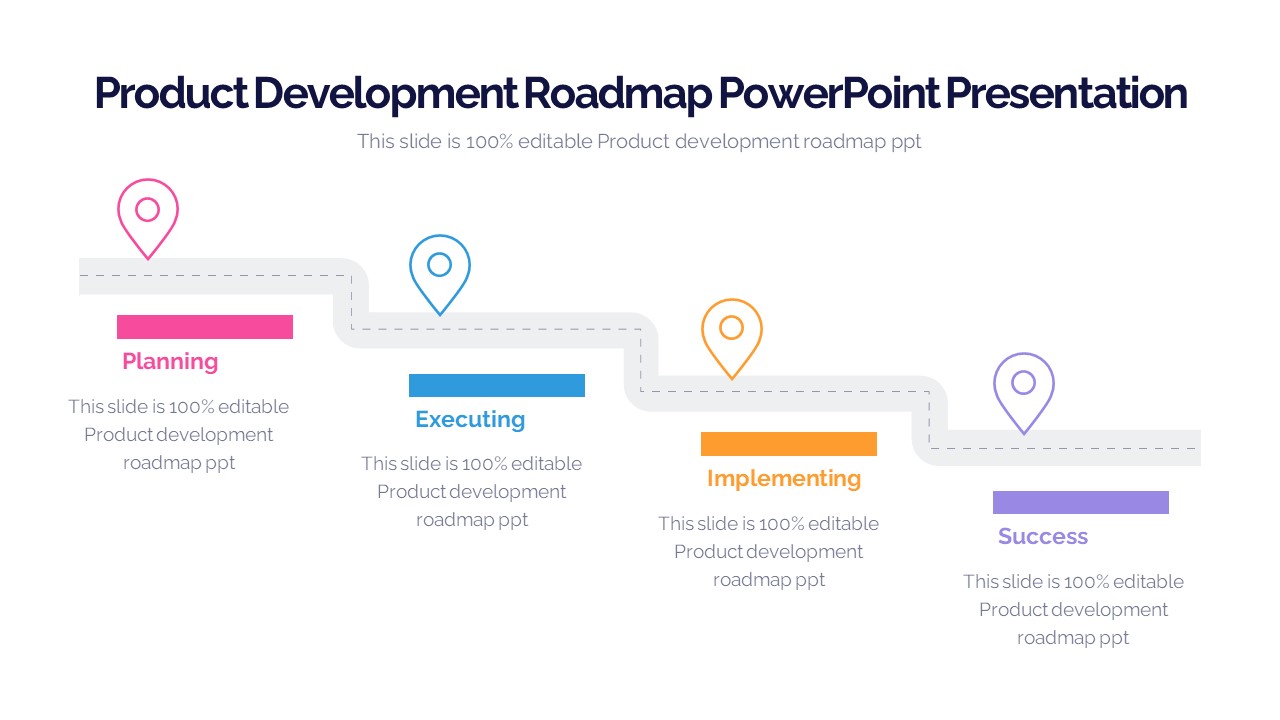Are you ready to transform your product development journey into a compelling visual story? Look no further than our Product Development Roadmap PowerPoint Presentation template. This professionally designed template is your key to showcasing your product’s evolution, strategy, and milestones in a way that captivates your audience.
Our template offers a range of customizable slides and graphics, allowing you to seamlessly craft your product’s roadmap. Highlight key phases, deadlines, and objectives with ease, making complex information accessible and engaging. Whether you’re presenting to stakeholders, investors, or your internal team, this template empowers you to convey your vision effectively.
With editable charts, timelines, and diagrams, you can tailor the presentation to your unique product development process. Showcase your innovation, highlight market trends, and outline your go-to-market strategy effortlessly. The sleek design and user-friendly interface make it a breeze to create a professional-grade presentation.
Elevate your product development discussions, enhance stakeholder buy-in, and drive your projects to success with our Product Development Roadmap PowerPoint Presentation. Take the first step towards clarity, alignment, and impactful communication today.
Features:
- Completely editable in terms of shape, color, size and text
- This template has a built in color theme which is unaffected by copy-pasting
- Includes an icon family with 135 unique completely editable icons
- Drag and drop image placeholder
- Completely editable (using spreadsheet) data-driven charts for displaying statistics
- Completely editable vector graphics
Supports
Microsoft PowerPoint 2010, 2011, 2013, 2016
MacOffice 2016, MacOffice 365, Keynote, Google Slides
Use Cases For Product Development Roadmap PowerPoint Presentation
- New Product Launch: Guide stakeholders through the journey of bringing a new product to market, outlining key milestones such as concept development, prototyping, testing, and commercial release. Highlighting these stages fosters alignment and ensures everyone understands the product’s development trajectory.
- Feature Enhancement: Visualize the roadmap for enhancing existing product features, from identifying customer needs to implementing improvements. This presentation helps teams prioritize enhancements, allocate resources effectively, and maintain a clear focus on delivering value to customers.
- Cross-Functional Collaboration: Facilitate collaboration among product managers, engineers, designers, and other stakeholders by presenting a roadmap that outlines their respective roles and timelines. This promotes transparency, fosters communication, and ensures everyone is working towards common goals.
- Timeline Management: Manage project timelines efficiently by breaking down product development into manageable phases and setting realistic deadlines for each stage. This roadmap presentation enables teams to track progress, identify potential bottlenecks, and make necessary adjustments to stay on schedule.
- Resource Allocation: Optimize resource allocation by visualizing the resource requirements for each phase of product development. By presenting resource needs alongside project timelines, decision-makers can make informed decisions about staffing, budget allocation, and other resource investments.
- Risk Mitigation: Identify and mitigate potential risks throughout the product development lifecycle by presenting a roadmap that highlights risk factors and mitigation strategies. This proactive approach helps teams anticipate challenges, implement preventive measures, and minimize disruptions to the project.
- Stakeholder Communication: Communicate product development progress and milestones to stakeholders, such as executives, investors, and customers, using a visually engaging roadmap presentation. This builds trust, instills confidence in the project’s trajectory, and fosters ongoing support and buy-in.
- Product Roadmap Alignment: Align the product development roadmap with the overall product strategy and business objectives. By presenting a roadmap that connects product development milestones to strategic goals, teams can ensure that their efforts are aligned with broader organizational priorities.
- Agile Planning: Implement Agile methodologies in product development by presenting a roadmap that outlines iterative development cycles, sprint goals, and release plans. This agile approach enables teams to respond quickly to changing requirements, gather feedback, and deliver value to customers in incremental releases.
- Market Response Monitoring: Monitor market response and customer feedback throughout the product development process by incorporating feedback loops into the roadmap. By presenting a roadmap that includes feedback collection points and iteration cycles, teams can iterate on product features based on real-world insights and customer needs.





David –
Good presentation
Parker –
perfect